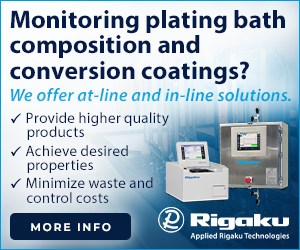How to Eliminate White Chalky Substance from Vibratory Finished Parts
Q. We are getting a white chalky substance left on our aluminum parts after vibratory finishing and it affects the coating adhesion. How do we eliminate this problem?
Q. We are getting a white chalky substance left on our aluminum parts after vibratory finishing and it affects the coating adhesion. How do we eliminate this problem?
A. The white chalky substance is the residue produced by the bonding agent that binds the cutting elements of the media. Ceramic, polyester, or synthetic are the three common binders used in mass finishing and all produce a white chalky appearance.
These solutions will reduce or eliminate the residue left behind on your parts:
- Flow-through soap compound system
- Rinsing the parts after the vibratory process
- Wash, rinse, dry systems
Flow-through compound systems mix soap at the recommended rates of 1 to 2 ounces of soap per gallon of water. The system also includes a flow meter that delivers the water/soap mixture at a recommended rate of 1 to 2 gallons per cubic foot of vibratory capacity per hour.
Example: A 10 ft.3 vibratory machine will run 10 ounces of soap and 10 gallons of the soap/water mix per hour.
The flow-through compound system flows the water and soap through the vibratory machine directly to drain. The soap binds the dirt, oil and media sediment, holds it in suspension, and washes it away from the parts and out of the machine.
Rinsing parts after vibratory will also assist the remaining residue removal. Parts must be rinsed while they are still wet from the vibratory process. Once the parts are allowed to flash dry, which happens very quickly, the rinse becomes ineffective.
Once sediment dries into the valleys of the surface profiles, it’s very difficult to remove.Adding a rinse aid (wetting agent) to your rinse water will assist the rinse process. Aqueous or ultrasonic wash, rinse and dry systems (batch or automated) can be added after the vibratory process if the cleaning specifications are very specific.
Originally published in the July 2017 issue.
Related Content
-
An Overview of Electroless Nickel Plating
By definition, electroless plating is metal deposition by a controlled chemical reaction.
-
How to Maximize Nickel Plating Performance
The advantages of boric acid-free nickel plating include allowing manufacturers who utilize nickel plating to keep up the ever-changing regulatory policies and support sustainability efforts.
-
Powder Coat MDF for an Enviable Finished Product
Cabinet maker says powder coating on wood offers more benefits.















